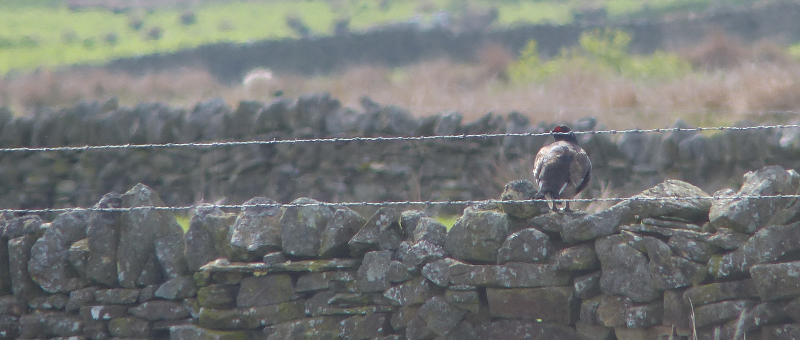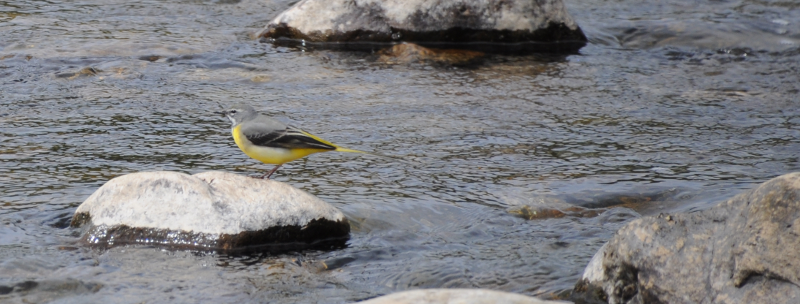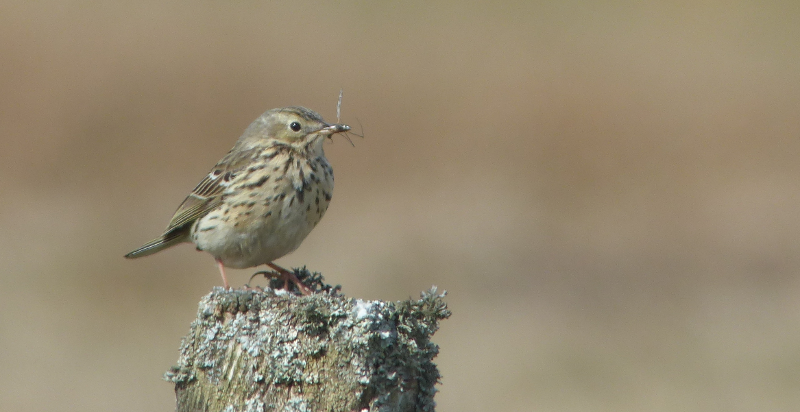Average Birding

A Northern Experience
It's time to get out of the London - there's a royal wedding happening. Let's away to the North. Specifically, the North East.
This post covers the events of May 17th 2018. Pronoun guidance: AB1 doesn't fall asleep.
To Newcastle
This trip's been in the calendar for a long time. We skilfully avoided the previous royal nonsense by being in middle of nowhere in the Lake District, we'll try the same trick again, this time in the North East. We're taking Thursday and Friday off to make a long weekend of it, and we've been suitably organised to get some seriously cheap train tickets (to Newcastle upon Tyne).
Our outbound train renders our organisation moot by being more than an hour behind schedule; we get a complete refund of our £30 tickets and lose an hour of sleep; not a deal we'd take if we had the option. A short taxi ride later and we reach the new abode of the Dixons (Kate and Stephen). To bed! For we rise at 6:30 for 7.
The North Pennines
The next morning arrives and we're and in another taxi on the way back to the station; we need to be on the Hexham train that leaves just before 8. We've arranged to go on a tour of the North Pennines with Martin of Northern Experience Wildlife Tours, and that's where we're going to start. Our main targets are grouse: Black (tricky) and Red (should be easy). We know little to nothing about where to find the former, so we thought we would enlist professional help.
After a short period of uncertainty (we don't know what Martin looks like, or what he'll be driving), Martin appears in a well-labelled vehicle, we get in, and immediately we're off up into the hills. We're in good hands - Martin car-birds as enthusiastically as we do; we're already a decent birding team after only a few minutes.
We make our first stop near the crest of one of the numerous hills, and stare over the drystone wall into the field beyond. A Curlew trills as it circles upwards at the left hand side. I feel unsuitably warm and dry; that sound is more often a harbinger of being on the coast (usually in Wales) on a cold grey day with squally showers. We get out of the car to have a look around, and that starts to work on the temperature part of that feeling, at least.
I've given this field a good scan and found a great many Lapwings, some Oystercatchers and a couple more Curlew. Martin does rather better and finds two Black Grouse sitting on the the wall at the rear of the field. Well. That was quick. It's quite nice to find a target bird this early - it takes the pressure off the rest of the trip, we can relax into it and enjoy the scenery a bit more.

The ensuing drive yields a great many Meadow Pipits, and, as we get higher, sporadic Red Grouse. These all attempt the same trick as the Grey Partridges from January; getting as low to the ground as possible once they feel under threat. They have mixed success; the ones on the near side of the fences and walls adjoining the road aren't really afforded enough cover to make it work and end up looking rather foolish. Those on the moorland disappear without trace.

Cow Green Reservoir
Our next major stop is at Cow Green reservoir. There are plenty of Red Grouse here too, but it's the moorland flora that is most interesting; there are some things that grow here that are not found anywhere else in the UK (Spring Gentians). After a bit of encouragement we even manage to find one or two of them, and, even more remarkably, don't immediately tread them into oblivion.
We walk as far as the dam of the reservoir, then take a left, descending down the torrent being emitted from it. This is bolted-on Dipper territory. A Grey Wagtail immediately pops up to confirm this, but strangely, of Dipper there is no sign.

An otherworldly raptor squeak disturbs the otherwise watery soundscape, but we can't pick it up; a chap on the way down had seen a Peregrine, perhaps it was that.
We stare at a few possible Dipper spots without success before heading back to the car park for a brief picnic.

Black Grouse Lek?
As the day wanes, Martin takes us back to a site where he's hoping to find us a Black Grouse lek. It's in a beautiful valley with mostly undisturbed grassland on both sides. There's an area next to the stream at the bottom of the valley that usually acts as the setting for the lek. We park up in a spot on the opposite of the valley with good sight lines to where the action might happen.
But not a lot happens. The Meadow Pipits that have been our constant companions look on from nearby fenceposts, confused.

A Golden Plover skips over at speed, peeping. One or two Curlew make their presence known. I manage to spot a bird of prey just as it starts bombing it down the valley towards us; by the time it gets into identifiable range it can only be a Peregrine. Despite the lack of lek, this is remarkably relaxing. So much so that AB2 drifts off into a snooze in the back.

Eventually we give in; no lek today, it seems. Not a problem - this is a wildlife tour, not a zoo, and with that there's an expectation that wild things won't always be where you expect; that's why it's interesting!
Our final stop is another, steeper walled valley, which manages a Common Sandpiper, a Redshank and a playful Wheatear or two. Still no Dipper; they're obviously all hiding today. Back to the car - time to call it a day. Martin, handily, is heading back past Newcastle so drops us off at the Dixons'. A most excellent Northern Experience it was too.